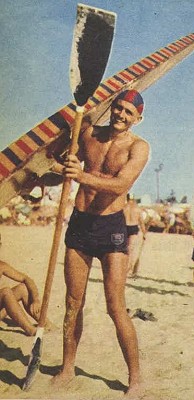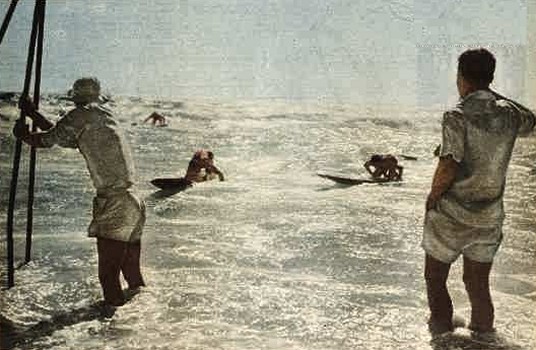The
Australian Women's Weekly
26 March 1958, page 8.
ACROSS
NULLARBOR TO SURF CONTESTS
PROUD MOMENT
for Barry Stuart, of Maroubra, N.S.W.. winner of the single surf ski
title during the
Australian and
Interstate Surf Championships held at Scarborough Beach, Western Australia,
this month.
SURF-BOAT
RACE, showing onlookers and a pattern of surfboards and boats on the
sand.
The Governor of Western Australia, Sir Charles Gairdner, and
Lady Gairdner attended the second day.
|

These pictures are by
Laurie Kimber.
|



